Cardiopulmonary Exercise Testing (CPET): Know What to Expect
Cardiopulmonary exercise testing (CPET or CPEX), also referred to as a VO2 (oxygen consumption) test, is a specialized type of stress test that measures your exercise ability. This document explains the common reasons for CPET, who might not be able to perform it, and how to prepare for the test. It also provides details on what to expect during the test and how results are processed.
Edit, Download, and Sign the Cardiopulmonary Exercise Testing (CPET): Know What to Expect
Form
eSign
Add Annotation
Share Form
How do I fill this out?
To fill out this document, start by understanding the reasons for the CPET and whether you qualify for the test. Follow the detailed instructions provided, including preparation and what to expect during the test. Complete the sections accurately and thoroughly to ensure all necessary information is included.
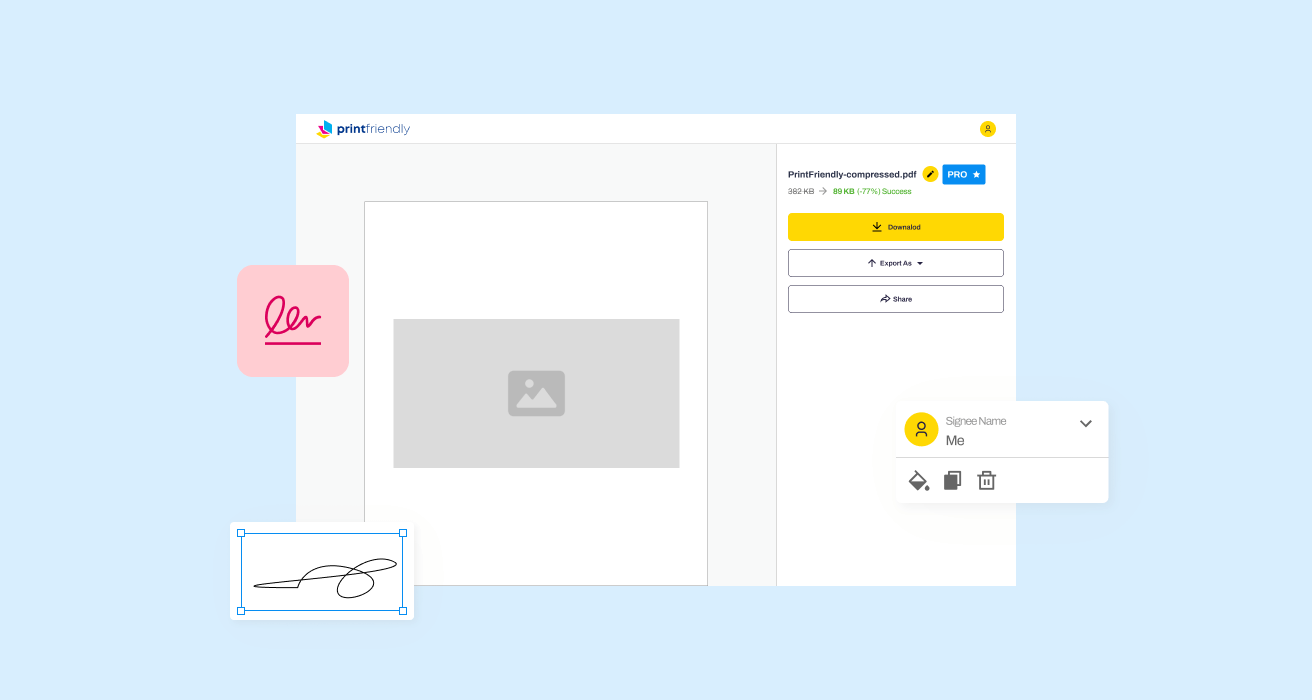
How to fill out the Cardiopulmonary Exercise Testing (CPET): Know What to Expect?
1
Read about the reasons for CPET and determine if you qualify.
2
Follow the preparation instructions such as clothing, eating, and smoking.
3
Understand what to expect during testing, including equipment and procedures.
4
Complete sections with accurate and thorough information.
5
Request the test results from your healthcare provider and review the findings.
Who needs the Cardiopulmonary Exercise Testing (CPET): Know What to Expect?
1
Individuals with unexplained shortness of breath to determine its cause.
2
Patients needing an assessment of exercise capacity and risk for surgical procedures.
3
People with known heart or lung disease to check the severity and response to treatments.
4
Those needing guidance on rehabilitation programs or exercise prescriptions.
5
Participants in research studies involving cardiovascular assessments.
How PrintFriendly Works
At PrintFriendly.com, you can edit, sign, share, and download the Cardiopulmonary Exercise Testing (CPET): Know What to Expect along with hundreds of thousands of other documents. Our platform helps you seamlessly edit PDFs and other documents online. You can edit our large library of pre-existing files and upload your own documents. Managing PDFs has never been easier.

Edit your Cardiopulmonary Exercise Testing (CPET): Know What to Expect online.
You can edit this PDF using PrintFriendly's new editing tool. Add, remove, or modify text as needed to complete your document. Our intuitive interface makes editing simple and efficient.

Add your legally-binding signature.
PrintFriendly now allows you to sign PDFs digitally. Add your signature directly onto the document without the need for printing and scanning. Our easy-to-use signing feature ensures your document is securely signed and ready for submission.
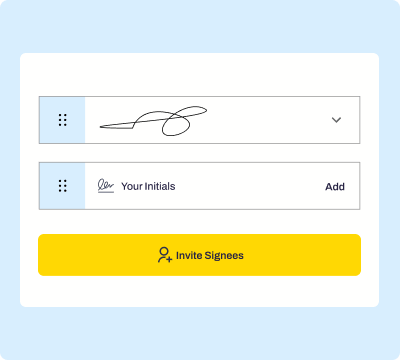
Share your form instantly.
Sharing your PDF is a breeze with PrintFriendly. After editing and signing your document, you can share it directly via email or generate a shareable link. Our platform ensures your document reaches its recipient quickly and securely.
How do I edit the Cardiopulmonary Exercise Testing (CPET): Know What to Expect online?
You can edit this PDF using PrintFriendly's new editing tool. Add, remove, or modify text as needed to complete your document. Our intuitive interface makes editing simple and efficient.
1
Open the PDF on PrintFriendly.
2
Use the editing tools to add, remove, or modify text.
3
Ensure all required fields are accurately completed.
4
Save your changes once you have reviewed and confirmed all information.
5
Download the edited PDF to your device or share it directly from PrintFriendly.

What are the instructions for submitting this form?
Carefully read and complete all sections of the CPET document. Ensure accurate information is provided as per the guidelines. Submit the completed document to your healthcare provider or the designated lab running the test. For electronic submission, upload the document through the specified online form. For physical submissions, mail or fax the completed document to the provided address or fax number.
What is the purpose of this form?
The purpose of this document is to provide comprehensive information on Cardiopulmonary Exercise Testing (CPET). It aims to educate patients about the reasons for undergoing CPET, preparation steps, and what to expect during the test. Additionally, the document serves as a guide for understanding the results and how they help in assessing heart and lung function.

Tell me about this form and its components and fields line-by-line.

- 1. Introduction: Explains what CPET is and its importance in measuring exercise capability.
- 2. Reasons for CPET: List of common reasons why one might be asked to perform CPET, such as unexplained shortness of breath or assessing exercise capacity.
- 3. Pre-test Preparation: Instructions on how to prepare for the test, including clothing, eating, and medication guidelines.
- 4. During the Test: Details on the testing process, monitors used, and what to expect while performing the exercise.
- 5. Post-test Procedures: Information on what happens after the test, including cool down and result processing.
- 6. FAQ: Frequently asked questions about CPET and how to prepare and perform the test.
What happens if I fail to submit this form?
Failure to complete or submit the CPET form could result in delays in diagnosing or assessing your heart and lung functions.
- Delayed Diagnosis: Without the CPET information, diagnosing the cause of unexplained shortness of breath or other symptoms may be delayed.
- Incomplete Assessment: Healthcare providers may not have all the necessary data to accurately assess heart or lung conditions.
How do I know when to use this form?

- 1. Unexplained shortness of breath: When experiencing unexplained shortness of breath, use this form to undergo CPET.
- 2. Assessing exercise capacity: Use this form when assessing exercise capacity, especially for surgical risk evaluation.
- 3. Known heart or lung conditions: This form is required for those with known heart or lung conditions needing further assessment.
- 4. Participating in research studies: Use this form if participating in research studies related to cardiovascular health.
Frequently Asked Questions
Can I edit this PDF on PrintFriendly?
Yes, you can use PrintFriendly's editing tools to modify the text and content of the PDF.
How do I add my signature to this PDF?
PrintFriendly provides a digital signing feature that allows you to add your signature directly onto the PDF.
Can I share the edited PDF directly from PrintFriendly?
Yes, you can share the edited PDF via email or generate a shareable link directly from PrintFriendly.
What should I do to prepare for CPET?
Follow the preparation guidelines provided in the document, such as wearing comfortable clothing, avoiding exercise, and not eating or drinking caffeine before the test.
What can I expect during the CPET?
During CPET, monitors will be placed on your body to measure heart and lung functions as you exercise on a treadmill or stationary bike.
How will my CPET results be processed?
The data collected during the CPET will be reviewed by healthcare professionals, and you will be informed about the results during a follow-up appointment.
Who should undergo CPET?
CPET is recommended for individuals with unexplained shortness of breath, known heart or lung conditions, or those needing assessments for surgical risks or rehabilitation.
Are there any conditions that prevent someone from doing the CPET?
Yes, conditions like musculoskeletal limitations, acute illnesses, recent heart attacks, and poorly controlled chronic diseases may prevent someone from doing the CPET.
What happens if I cannot complete the CPET?
If you cannot complete the CPET, inform the lab staff, and they will stop the test and provide further instructions.
What should I do after completing the CPET?
After the CPET, you should cool down, get water, and wait for instructions from the lab staff. Follow up with your healthcare provider to review the results.
Related Documents - CPET Guide
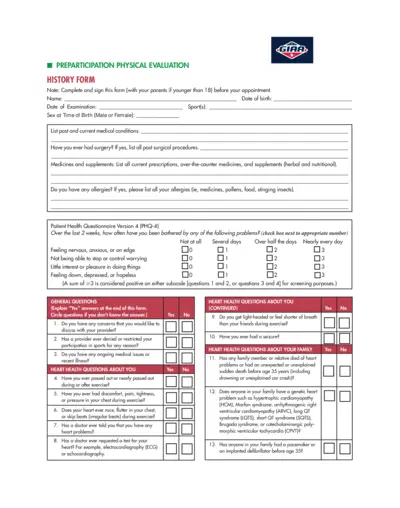
Preparticipation Physical Evaluation Form
The Preparticipation Physical Evaluation Form is used to assess the physical health and fitness of individuals before they participate in sports activities. It covers medical history, heart health, bone and joint health, and other relevant medical questions.
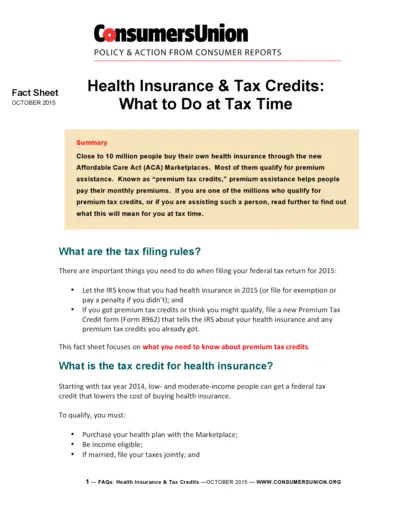
Health Insurance Tax Credits Guide 2015
This document provides a comprehensive guide on health insurance and premium tax credits for the 2015 tax year. It explains the tax filing rules, eligibility criteria, and detailed instructions for claiming and reporting premium tax credits. Essential for individuals who bought health insurance through the ACA Marketplaces.

TSP-77 Partial Withdrawal Request for Separated Employees
The TSP-77 form is used by separated employees to request a partial withdrawal from their Thrift Savings Plan account. It includes instructions for completing the form, certification, and notarization requirements. The form must be filled out completely and submitted along with necessary supporting documents.
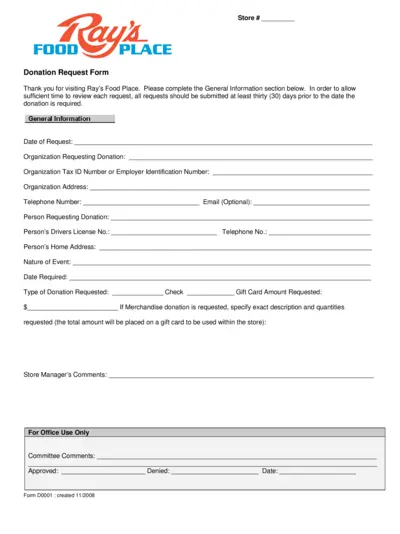
Ray's Food Place Donation Request Form Details
This file contains the donation request form for Ray's Food Place. Complete the general information section and follow the guidelines to submit your donation request at least 30 days in advance. The form includes fields for organization details and donation specifics.
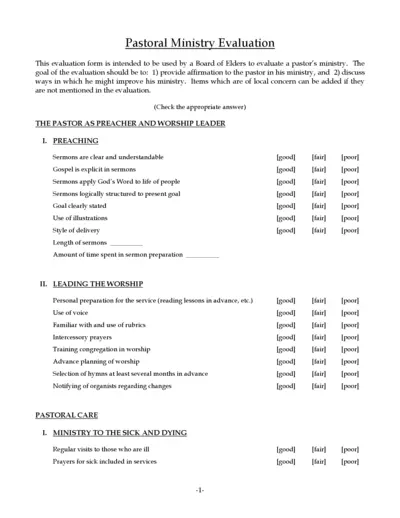
Pastoral Ministry Evaluation Form for Board of Elders
This evaluation form is designed for the Board of Elders to assess and provide feedback on a pastor's ministry. It aims to offer affirmation and identify areas for improvement. The form covers preaching, worship leading, pastoral care, administration, and more.
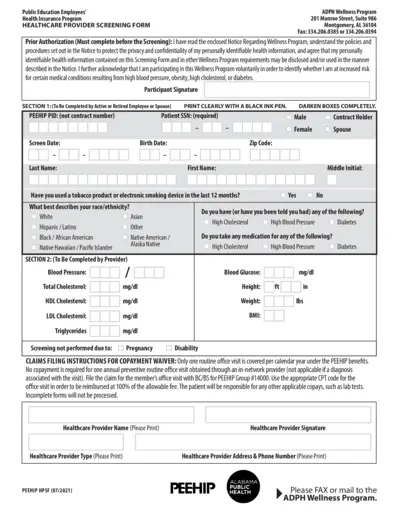
Health Provider Screening Form for PEEHIP Healthcare
This file contains the Health Provider Screening Form for PEEHIP public education employees and spouses. It includes instructions on how to fill out the form for wellness program participation. The form collects personal, medical, and screening details to assess wellness.
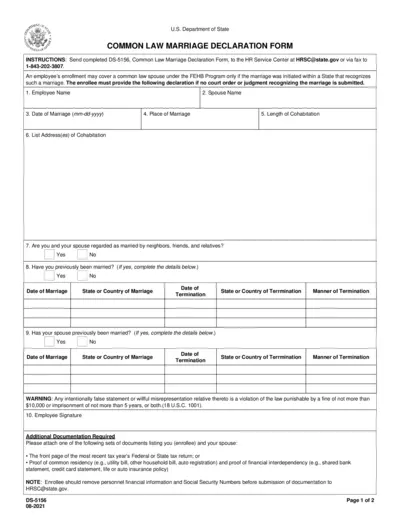
Common Law Marriage Declaration Form for FEHB Program
This form is used to declare a common law marriage for the purpose of enrolling a spouse under the Federal Employees Health Benefits (FEHB) Program. It requires personal details, marriage information, and additional documentation. Submission instructions and legal implications are included.
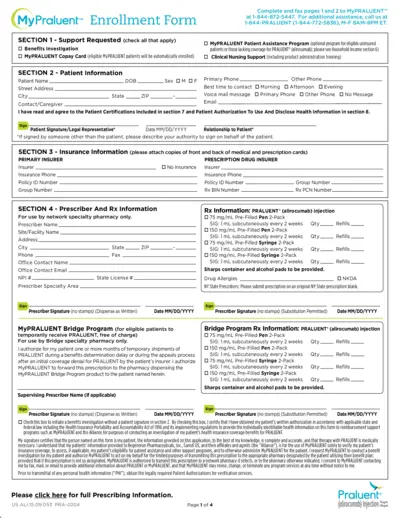
MyPRALUENT™ Enrollment Form Instructions and Details
This document provides comprehensive instructions and details for enrolling in the MyPRALUENT™ program, including benefits, patient assistance, and clinical support. It outlines the required patient, insurance, and prescriber information, as well as the steps for treatment verification and household income documentation.
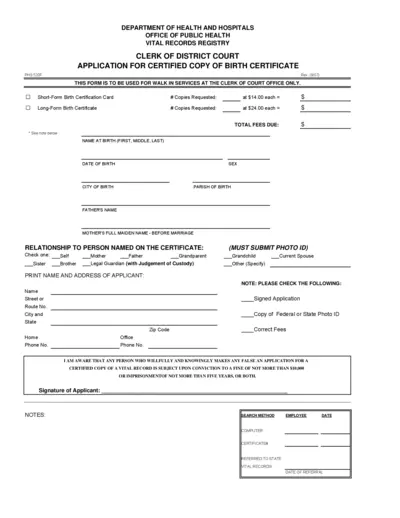
Application for Certified Copy of Birth Certificate
This form is used to request a certified copy of a birth certificate from the Clerk of Court Office. It includes details about the applicant, the person named on the certificate, and requires a photo ID and the correct fee. This form is only for walk-in services.
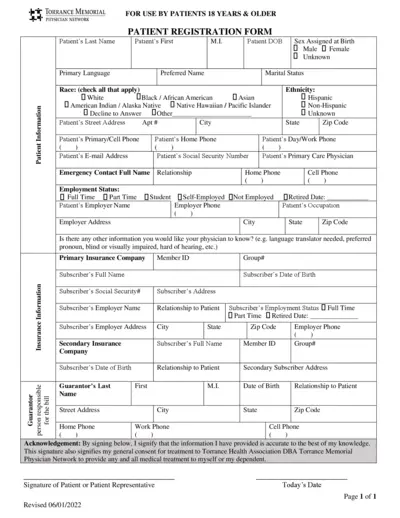
Torrance Memorial Physician Network Forms for Patients 18+
This file contains important forms for patients 18 years and older registered with Torrance Memorial Physician Network. It includes patient registration, acknowledgment of receipt of privacy practices, and financial & assignment of benefits policy forms. Complete these forms to ensure your medical records are up-to-date and to understand your financial responsibilities.
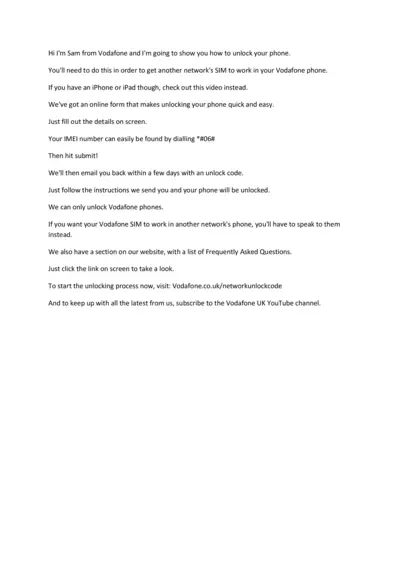
Vodafone Phone Unlocking Guide: Steps to Unlock Your Phone
This guide from Vodafone provides a step-by-step process to unlock your phone. Learn how to obtain your unlock code by filling out an online form. Follow the instructions to complete the unlocking process.
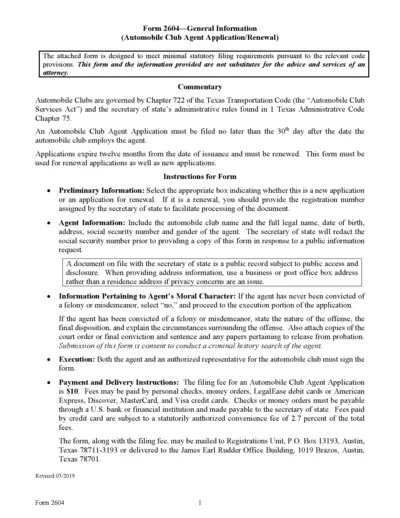
Texas Automobile Club Agent Application Form
This file is the Texas Automobile Club Agent Application or Renewal form, which must be submitted within 30 days after hiring an agent. The form includes fields for agent identification, moral character information, and requires signature from both the agent and an authorized representative of the automobile club. Filing fees and submission instructions are also provided.